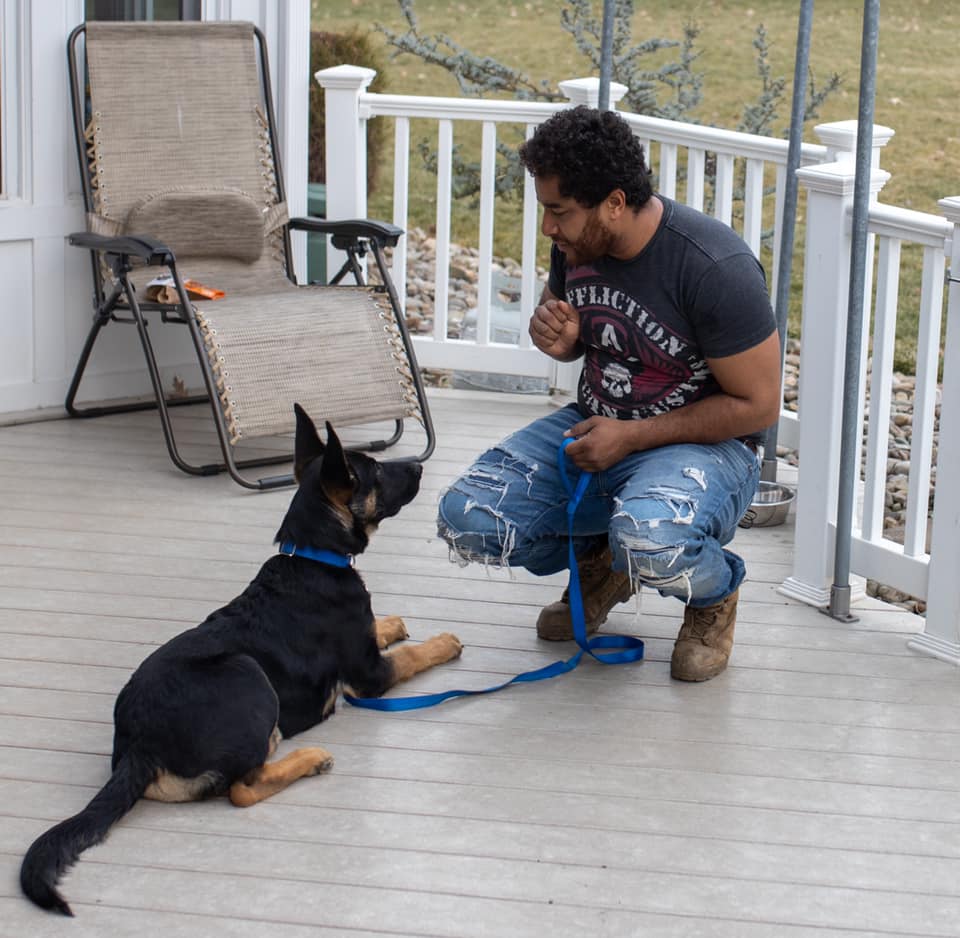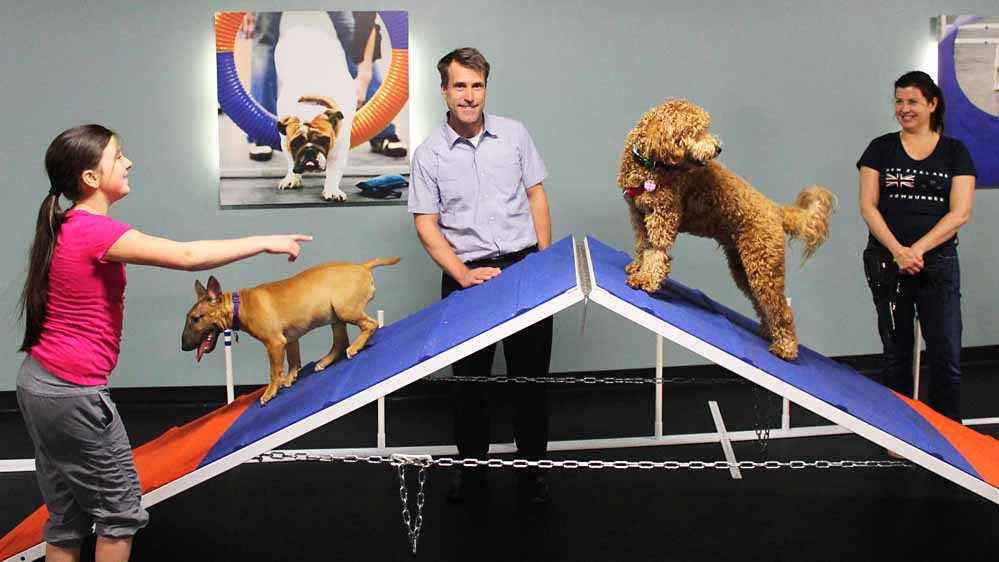Effective Approaches for Successful Dog Training: A Comprehensive Guide
Effective dog training needs a nuanced understanding of canine actions. It rests on the principles of positive support and uniformity. Instructors have to recognize the significance of necessary commands and socializing. Addressing common behavioral issues can transform a dog's disposition. As the bond between owner and canine strengthens, the way they communicate develops. The journey of successful training encompasses various strategies that might stun also skilled family pet owners. What are the crucial elements that can make a considerable difference?
Understanding Canine Actions
Recognizing canine actions is necessary for efficient canine training, as it allows instructors to translate a pet dog's actions and responses in numerous circumstances. Canines interact primarily with body language, articulations, and face expressions. Identifying indicators of aggressiveness, stress, or concern can aid instructors adjust their strategies to guarantee a favorable training experience. A wagging tail does not always suggest happiness; the context and other body signs must be thought about.
Furthermore, comprehending a dog's breed-specific traits can provide insights right into their behavior patterns and instincts. Socializing plays an important role fit a pet's responses to brand-new individuals and settings. Observing a dog's play style can likewise disclose their personality and comfort levels. By very carefully reviewing these behaviors, trainers can produce tailored methods that cultivate knowing and enhance the bond in between pet and proprietor, ultimately resulting in even more effective training results.
The Relevance of Positive Reinforcement
Positive reinforcement is a key technique in pet dog training that boosts the finding out procedure by rewarding desired behaviors. This method encourages canines to repeat actions that produce positive outcomes, such as treats, praise, or playtime (Dog Training Near Me). By associating excellent habits with benefits, pet dogs end up being much more motivated and engaged during training sessions

Including favorable reinforcement into training routines can result in quicker understanding and much better retention of commands. It advertises a joyous environment that improves both the canine's experience and the fitness instructor's contentment, making it a basic facet of reliable pet dog training.
Crucial Commands Every Dog Need To Know

Producing a Consistent Training Set Up
Establishing a constant training schedule is essential for reliable pet dog training, as it helps enhance discovering and produces a feeling of regular for the canine. An organized technique allows both the instructor and the pet dog to expect training sessions, which can enhance emphasis and engagement. Preferably, training sessions must be short, long-term between 5 to 15 mins, to preserve the dog's interest and enthusiasm.
Integrating training right into everyday activities, such as mealtime or walks, can also promote uniformity. This integration helps dogs associate training with favorable experiences. It is very important for trainers to stay flexible; unforeseen occasions may demand adjustments to the timetable.
In addition, rep is vital. Regular method of commands and behaviors strengthens discovering and builds self-confidence. By adhering to a consistent timetable, instructors can guarantee that their pets develop good habits and respond accurately to commands, preparing for efficient training results.
Socializing: Key to a Well-Adjusted Canine
Socializing is essential for a pet dog's advancement, affecting their actions and interactions with people and other animals. Early direct exposure to numerous environments, sounds, and experiences can substantially enhance a canine's adaptability and confidence. Employing effective socialization methods can assist assure a well-adjusted canine friend.
Relevance of Very Early Socializing

Methods for Reliable Socializing
While numerous pet dog owners identify the significance of socialization, understanding reliable techniques to facilitate this process is necessary for fostering a well-adjusted pet dog. Steady direct exposure to diverse settings, people, and other animals can considerably enhance a canine's convenience degree in various scenarios. Favorable support plays a vital function; satisfying preferred behaviors urges dogs to come close to new experiences with self-confidence. Structured playdates with courteous dogs aid develop social skills and mitigate fear actions. Enrolling in obedience classes can also provide controlled settings for socializing. Finally, maintaining a calm disposition as an owner enhances the pet dog's complacency, permitting even more successful communications. These techniques jointly add to a balanced and versatile canine buddy.
Taking Care Of Common Behavioral Issues
Managing usual behavior issues is crucial for review maintaining a harmonious relationship in between canines and their proprietors. Key obstacles such as hostility, extreme barking, and leaping behavior call for targeted approaches to manage efficiently. Recognizing the source of these behaviors can cause successful treatments and an extra balanced canine friend.
Resolving Aggressiveness Issues
Aggression in pets can show up in different types, positioning obstacles for fitness instructors and owners alike. Attending to these problems necessitates a thorough understanding of the underlying reasons, which might consist of resource, concern, or territoriality safeguarding. Determining triggers is vital; owners must observe their pet dog's body language and habits to identify details scenarios that provoke aggressiveness. Positive support strategies can efficiently modify aggressive behavior, satisfying tranquil feedbacks to determined triggers. Uniformity is key, and owners should continue to be patient throughout the training procedure. In many cases, specialist support from a licensed dog instructor or behaviorist may be required, especially for severe aggressiveness. Ultimately, the objective is to develop a risk-free environment for both the dog and those around it.
Handling Too Much Barking
Too much barking can be a significant nuisance for canine proprietors and next-door neighbors alike, frequently signifying underlying issues that need dealing with. Recognizing the triggers behind the barking is important; these might include boredom, stress and anxiety, or a reaction to exterior stimulations. Owners must observe their pet dog's behavior and environment to determine the reason. Dog Training Near Me. Implementing consistent training methods, such as positive support, can successfully minimize barking. Showing commands like "peaceful" or rerouting the canine's attention at the minute of barking can be useful. Additionally, offering appropriate physical and psychological stimulation with exercises and interactive playthings can relieve boredom-related barking. In some situations, consulting a professional fitness instructor or behaviorist might be essential to develop tailored strategies that deal with consistent barking worries
Reducing Jumping Behavior
Numerous canines display leaping behavior, frequently as a way of expressing excitement or seeking attention from their proprietors and site visitors. This habits can be problematic, particularly when it results in unintended injuries or pain for visitors. To minimize leaping, proprietors need to initially continue to be calm and prevent rewarding the habits with focus, as this can strengthen it. Rather, they can show an alternate habits, such as sitting, by awarding the pet dog for remaining tranquility when someone techniques. Consistency is essential; all household participants must impose the very same rules. Furthermore, training sessions must include distractions to aid the pet dog learn to control their impulses. In time, with patience and persistence, jumping can be significantly decreased, resulting in a more positive setting.
Building a Solid Bond With Educating
Although training a pet dog frequently focuses on commands and behaviors, it also acts as a crucial opportunity to strengthen the bond in between the dog and its owner. Participating in training sessions promotes communication, common understanding, and count on. When owners invest time in instructing their pet dogs, they show dedication, which aids the dog feel secure and valued. Positive support techniques, such as treats and appreciation, not only motivate preferred actions however likewise enhance the emotional connection between the pet and proprietor.
Uniformity in training develops a feeling of integrity, allowing dogs to recognize their role within the family. Each successful command boosts the dog's confidence, resulting in a much deeper connection. Normal training sessions can come to be enjoyable bonding experiences, loaded with playfulness and interaction - Dog Training Near Me. Eventually, the procedure of training goes beyond plain obedience, Check Out Your URL creating a partnership that improves the lives of both the dog and its owner
Frequently Asked Inquiries
What Age Is Best to Start Educating a Pup?
The best age to start training a young puppy is generally between 8 to 12 weeks. At this stage, young puppies are most receptive to discovering, making it an optimal time for fundamental training and socializing.
For how long Should Each Educating Session Last?
The excellent duration for each and every dog training session usually varies from 5 to 15 mins, relying on the pet dog's age and attention period. Short, concentrated sessions boost learning and retention, making training extra effective and pleasurable.
Can Older Pet Dogs Still Be Trained Successfully?
Older pets can indeed be educated properly. With persistence and constant techniques, they can discover brand-new commands and behaviors. Their experience usually makes them extra receptive to training, enhancing the bond between pet and owner.
What Tools Do I Need for Training?
For reliable canine training, crucial equipment consists of a sturdy leash, a comfortable harness, high-value deals with, training clickers, and a range of playthings. These tools assist in interaction and reinforce positive habits throughout training sessions.
How Do I Track My Pet dog's Training Development?
To track a pet dog's training progression, one can keep a journal, document turning points, and note behavior modifications. Routine analyses, including timed commands and obedience tests, help assess enhancement and recognize locations requiring more focus.
Comprehending canine behavior is essential for efficient dog training, as it enables trainers to interpret a canine's actions and reactions in different situations. Establishing a constant training schedule is important for reliable pet dog training, as it aids reinforce understanding and produces a sense of Get the facts routine for the pet dog. Training a canine commonly focuses on actions and commands, it additionally serves as an essential possibility to enhance the bond between the canine and its proprietor. When proprietors invest time in instructing their pet dogs, they show dedication, which assists the pet feel secure and valued. The suitable duration for each canine training session typically varies from 5 to 15 mins, depending on the canine's age and interest period.